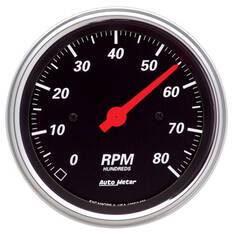Tachometer Essential: Everything You Required to Know for Accurate Readings
Opening the Keys of Tachometers: Every Little Thing You Required to Learn About This Crucial Instrument in Your Car
Understanding the intricacies of tachometers can provide beneficial understandings into your lorry's efficiency and maintenance requirements. From gauging engine rate to understanding the data it presents, tachometers work as a critical device for car proprietors and lovers alike. By unwinding the secrets behind this important tool, you can open a wealth of details that can improve your driving experience and ensure the long life of your automobile.
Significance of Tachometers
The value of tachometers hinges on their ability to give critical real-time data concerning an engine's rotational speed, permitting exact monitoring and upkeep of machinery. By gauging the revolutions per min (RPM) of an engine's crankshaft, tachometers provide beneficial understandings into the engine's efficiency - tachometer. This data is essential for making sure that the engine operates within its ideal array, preventing possible damage from over-revving or underperforming
Tachometers play a crucial role in assisting drivers and technicians find any anomalies in the engine's rate, which could suggest concerns such as fuel ineffectiveness, mechanical troubles, or excessive stress on the engine. By without delay identifying these problems through tachometer readings, upkeep can be performed proactively, protecting against expensive repair work and downtime in the future.
Additionally, tachometers are especially important in high-performance lorries and machinery, where specific control over engine rate is essential for optimal operation. Competing vehicles, airplane, and commercial equipment rely on tachometers to deliver peak efficiency while keeping security criteria. Essentially, tachometers are not just instruments for measuring speed yet important tools for making certain the smooth and effective operation of engines throughout different applications.
Exactly How Tachometers Action Engine Rate
Utilizing sensing units that detect the regularity of electrical pulses produced by the engine's ignition system, tachometers accurately determine the rotational rate of an engine. By keeping an eye on the rate at which these pulses are gotten, tachometers supply real-time feedback on how quickly the engine's crankshaft is turning per min, typically referred to as revolutions per minute (RPM)
The tachometer's sensor, usually linked to the engine's ignition coil or stimulate plug wires, picks up the electric signals created each time a cyndrical tube fires. These signals are after that transformed right into RPM analyses presented on the gauge or tool cluster within the vehicle driver's sight. Tachometers can be analog or electronic, with modern cars commonly including digital display screens for accurate and rapid RPM analyses.
This details is critical for chauffeurs to recognize the engine's performance, stop over-revving, optimize gear changing, and ensure reliable gas consumption. By precisely gauging engine speed, tachometers play a crucial duty in helping motorists run their vehicles safely and successfully.
Analyzing Tachometer Readings
Having a clear understanding of just how tachometers determine Discover More engine speed establishes the structure for efficiently interpreting the RPM analyses showed. Interpreting tachometer analyses is critical for ideal lorry efficiency and engine health. When the engine is idling, the tachometer needle typically relaxes around 600-1000 RPM, depending on the automobile.


Tips for Utilizing Tachometers Efficiently
To boost driving effectiveness and maximize engine performance, what trick approaches can be carried out for effectively using tachometers? Tachometers are essential devices that provide real-time comments on engine speed, allowing vehicle drivers to make educated choices for better efficiency - tachometer. Below are some suggestions for utilizing tachometers effectively:
Comprehending Optimal RPM Variety: Acquaint on your own with the optimal RPM (Transformations Per click over here now Min) range for your automobile. This array ranges various vehicles and is normally suggested in the proprietor's manual. Keeping the engine within this variety can boost fuel efficiency and extend the read here engine's life-span.
Changing Equipments at the Right Time: Make use of the tachometer to establish the best time to change gears. Aim to shift gears when the RPM reaches the optimum array for the following equipment.
Monitoring Engine Stress: High RPMs for prolonged periods can stress the engine. Watch on the tachometer to avoid over-revving, particularly during acceleration or when carrying hefty lots.
Tachometers and Automobile Maintenance
When taking into consideration automobile maintenance, tachometers play a vital function in checking engine performance and identifying prospective concerns. Tachometers offer essential data on engine rate, allowing vehicle drivers and mechanics to make certain that the engine is operating within the advised RPM range.
In enhancement to detecting prospective concerns, tachometers can additionally help in maximizing fuel effectiveness. By maintaining the engine speed within the ideal array, chauffeurs can enhance their gas mileage and lower fuel usage. This not just profits the chauffeur's budget yet additionally adds to ecological preservation by lowering damaging exhausts.
Conclusion
